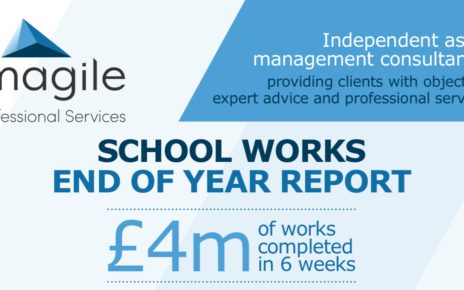Article written by Martyn Perrin, Lifecycle Manager at IPSL
Lifecyle planning, or whole life costing (“WLC”) as it is often called, is part of a strategic asset management system with a cradle-to-grave approach. It looks at an asset or piece of infrastructure over its whole life, assessing the total cost by taking into account all phases including construction, renewal, occupancy, maintenance and environmental and end-of-life, supporting investment and value-based decision making.
Thanks to ever-improving technology, more efficient solutions coming to market and a growing focus on holistic environmental considerations, there’s now more interest in lifecycle planning than ever before.
There is also greater awareness of the benefits of accurate, efficient and strategic WLC, as well as a desire to closely manage perceived risk and operational challenges, such as the management and mitigation of obsolescence or design complexities.
This level of strategic planning supports wider industry objectives and, from the work we do at IPSL, we know that it provides our clients with the expert end-to-end support they require from an experienced asset management firm.
Without question, we’re seeing an increased demand for more holistic planning approaches in the asset management industry. More and more organisations are realising the importance of quality WLC management in driving holistic value from infrastructure investment.
The G20 principles for infrastructure investment
Recently, finance ministers from the world’s top economies came together for the G20 conference, where they discussed key issues in the global economy and endorsed new principles for promoting ‘quality’ infrastructure investment with an emphasis on life cycle costs.
The life cycle principle states; ‘Quality infrastructure investment should attain value for money and remain affordable with respect to life-cycle costs, by taking into account the total cost over its life-cycle (planning, design, finance, construction, operation and maintenance (O&M), and possible disposal), compared to the value of the asset as well as its economic, environmental and social benefits. Using this approach helps choose between repairing or upgrading existing infrastructure or launching a new project. Project preparation, as set out in the G20 Principles for the Infrastructure Project Preparation Phase, is crucial in this regard.’
Strong, balanced and inclusive growth and sustainable development were announced as key goals for the G20, with infrastructure viewed as an important driver of economic prosperity. It’s fantastic that international ministers have now highlighted the vital role of life-cycle planning and this has undoubtedly paved the way for continued industry improvements.
Achieving the benefits of accurate, efficient and strategic WLC is heavily reliant on quality data. Experienced lifecycle / WLC practitioners are skilled in identifying and compiling data-sets from many sources.
A group of UK institutions have recently collaborated in bringing a number of these data sets together in a common structure or taxonomy, allowing greater integration of information including an improved CIBSE Guide.
CIBSE (Chartered Institution of Building Services Engineers), has just updated its often-referenced Guide M in association with the RICS (Royal Institute of Chartered Surveyors) and BESA (Building Services Engineering Association). Guide M has been reviewed and revised to ensure that the data it contains is keeping pace with developments in the industry.
The update includes revised guidelines for mechanical and electrical assets’ estimated service lives, as well as allocation of the BESA SFG20 maintenance tasks and mapping to the RICS NRM3 asset taxonomy, giving a consistent approach. This should help improvements in CAFM integration and asset management compliance management.
Published data like Guide M is a great foundation for lifecycle planning, however delivering real benefit to projects / assets through applying best practice techniques also requires a detailed knowledge and understanding of assets’ performance in specific circumstances. What is it that influences good and bad asset outcomes? Where is investment best focussed?
Experienced practitioners using locally sourced information combined with data like Guide M together help to achieve better value outcomes for infrastructure projects.
Whole Life Costing with IPSL
At IPSL, we have one of the largest dedicated Whole Life Cost Consulting teams in the UK with a focus on providing our clients with comprehensive, multi-disciplinary and bespoke end-to-end support.
We’re facilitating, challenging and delivering strategic asset management through detailed systems and experience. We pride ourselves on having a strong reputation for providing quality informative lifecycle modelling and having an exemplary track record of delivering value for all our clients.
We know that introducing a whole life costing approach that combines a considered policy with consistently captured data with a client, can provide a model for effective asset management, regardless of the sector or industry it operates in.
Our aim is to provide our clients with added value through the planning and management of an asset’s lifecycle.
Our holistic approach to life cycle asset management based on managing large data to effectively predict an assets’ whole life costs.
In the early part of 2020, we expect to see an even greater emphasis on whole life cost consulting in the provision of asset management consultancy services. Through our team of experts, we’re already very well placed to meet that demand and offer solutions that deliver optimum value for our clients.
If you want to find out more about the services our team can offer your business, please get in touch with our Business Development Manager, Laura Evans, at Laura.evans@imagileps.com.











